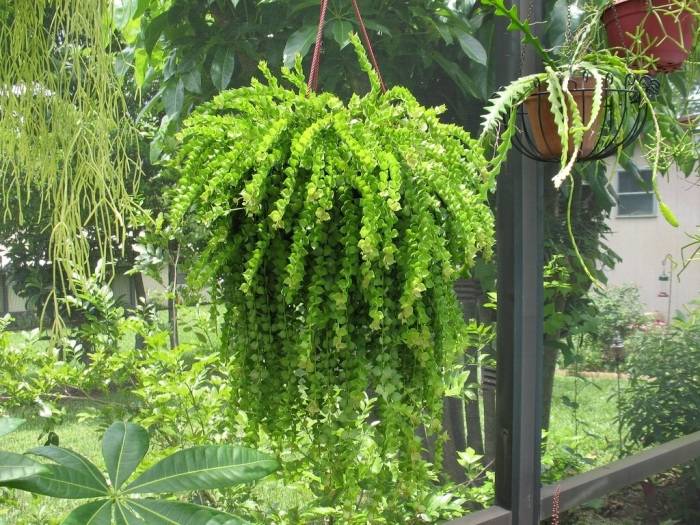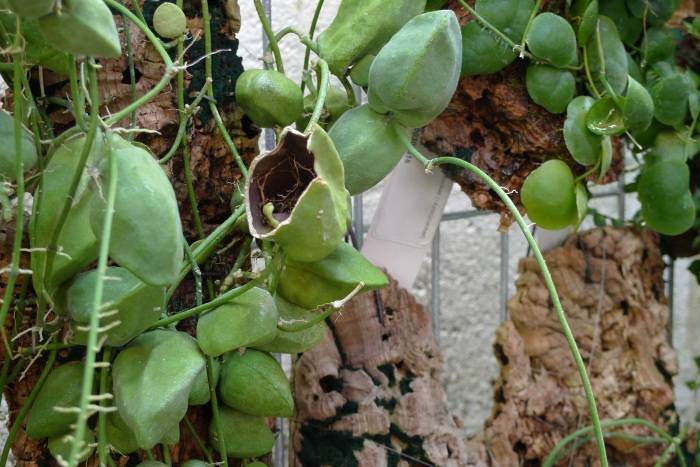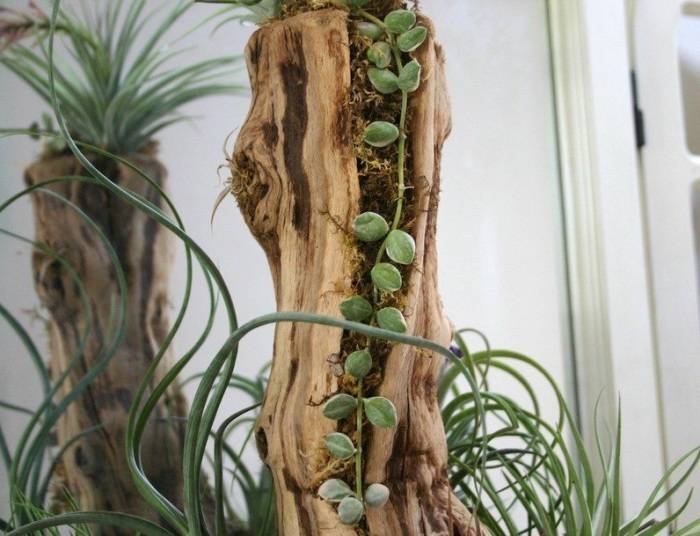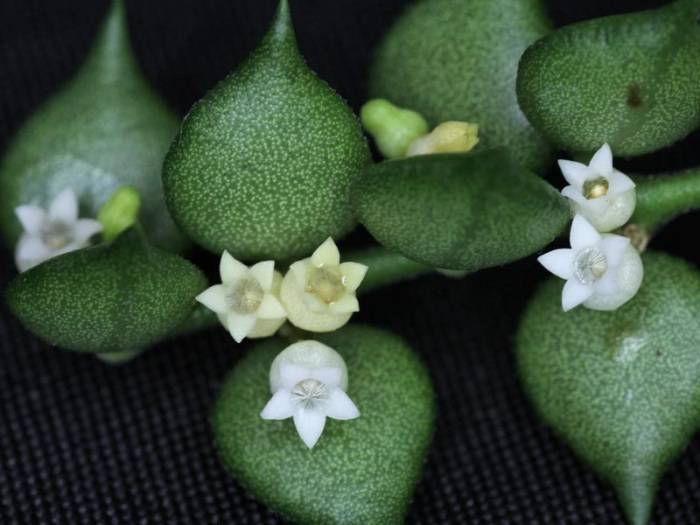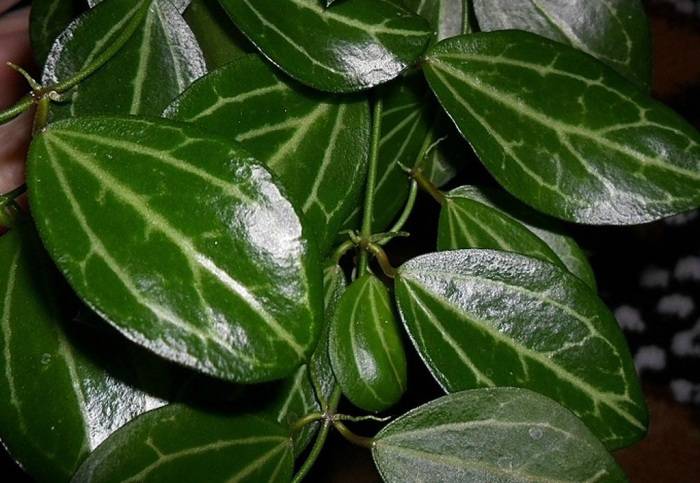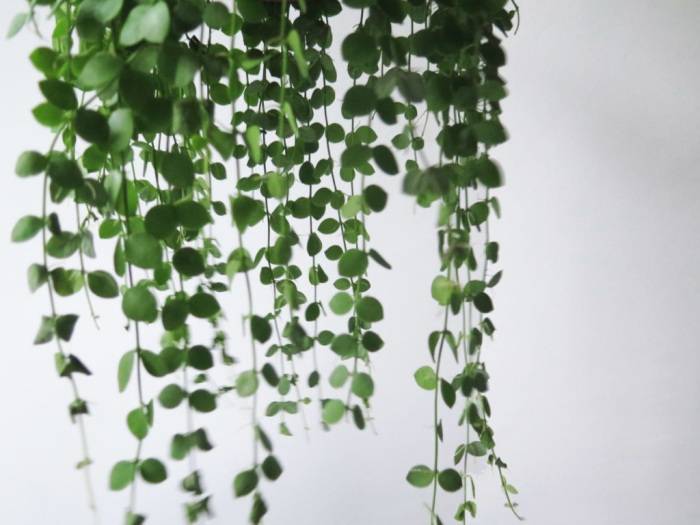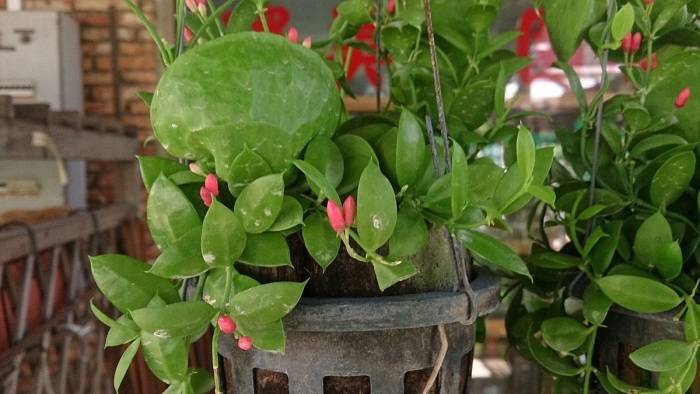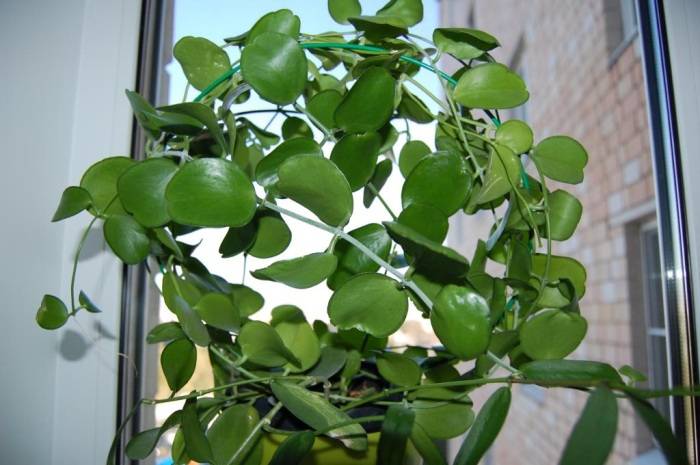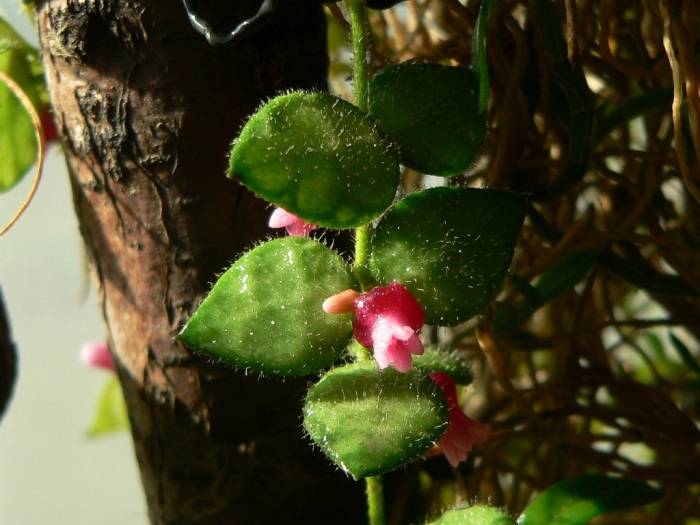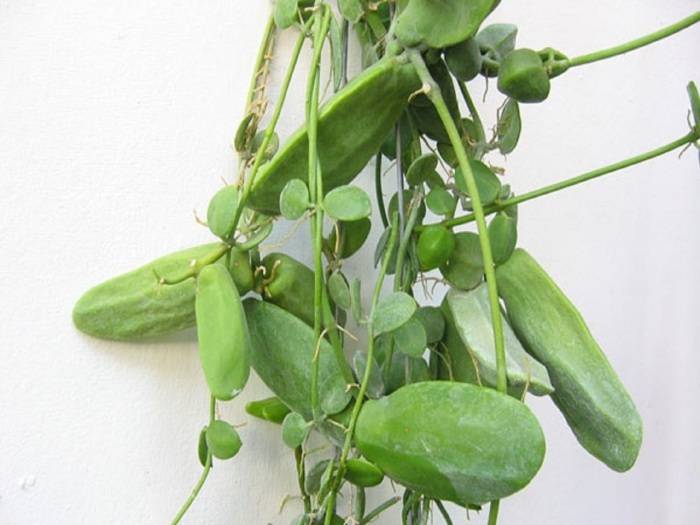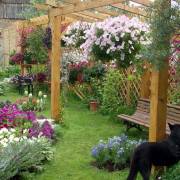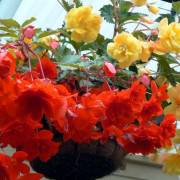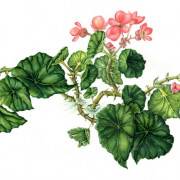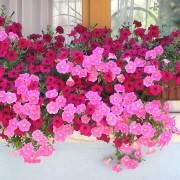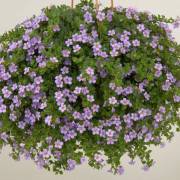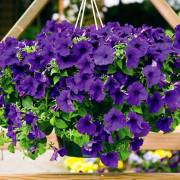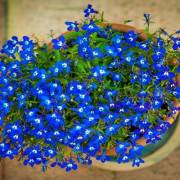Dyschidia Russifolia - Ovata, Million Hearts, Singularis and Rusk-leaved
Content:
An exotic inhabitant of the tropics, dyschidia russifolia, resembles a green waterfall flowing along the walls of the flowerpot. It is still rarely seen in Russian homes and offices. There are a number of nuances in the growing process that you need to familiarize yourself with before purchasing a flower.
Botanical description
The Latin name for this unusual plant is Dischidia Ruscifolia. On the Internet forums of flower growers, this name is often written "dishidia". However, in the botanical encyclopedia it is customary to use the "dyschidia" variant. "Russifolia" is translated as "ruskusolistnaya". The leaves of this guest from the tropics resemble ruscus leaves, hence the second part of the name.
In the wild, the flower is common in the Australian, Indian and Polynesian rainforests. Epiphyte grows on other plants, while not parasitizing them. It is also a succulent that accumulates water in the leaves. Belongs to the subfamily Lastovnevye (Vatochnikovye), which is part of the Kutrovye family.
Dyschidia is an ampelous plant, its branches should hang from the pot. The ideal option is a hanging planter.
The bloom is not very decorative, but regular.
An interesting visitor from tropical forests and two types of leaves. In natural nature, not only ordinary leaves resembling a heart, but also special jugs are formed on dyschidia. The sheet plate folds up in an interesting way, forming a container. Such a jug is of practical value for a flower. Roots grow inside such leaf plates. During the rain, water accumulates in the jug, which nourishes the entire plant. Pieces of wood, leaves and even dead insects also get there. All this forms its own nutrient substrate, which only benefits the epiphyte.
Care features
Dyschidia care at home requires painstaking, observing a special temperature regime.
Temperature
Dischidia is a thermophilic flower. The room where it grows should not be colder than 18 ° C. Temperature maximum - 30 ° С. The ideal range is 22-25 ° C.
Lighting
Illumination should be good. In this case, the light should not be direct. Delicate leaves are susceptible to burns when exposed to sunlight.
Watering
Watering is required in moderation, but the soil should not completely dry out. In summer, watered weekly when the topsoil dries up. In winter, watering is reduced to once a month.
Water is taken:
- filtered;
- boiled;
- defended for at least 3 days;
- rain;
- from the melted snow.
Spraying
Spraying from a spray bottle is carried out regularly with the same soft water as for irrigation. In summer and during the heating season, you need to spray at least once a day.
Humidity
The higher it is, the better. The minimum is 40%. Provided in the following ways:
- using an automatic humidifier;
- placing pots with dischidia on a pallet covered with pebbles, expanded clay, etc.
- frequent spraying.
Priming
The soil should be breathable and well saturated with water. Heavy clay soil will not work. You can purchase your potting potting mix at a botanical store. A mixture for orchids is suitable. Experienced growers can independently prepare the substrate for planting dyschidia. It should include:
- peat moss (sphagnum) - one part;
- peat - three parts;
- sheet soil - two parts.
- some river sand and charcoal.
Top dressing
For feeding, fertilizers are chosen for succulents or decorative deciduous plants. Fertilize no more than once a month during the active growing season. They alternate soil (watering) and foliar (spraying) top dressing.
Transfer
Russifolia does not like change. It is worth replanting it only in the following cases:
- when bought in store soil, not suitable for the constant growth of a flower;
- when the planter is damaged;
- when the root system has become too cramped in the pot;
- with depletion of the soil (every two years);
- if there are problems with the soil, parasites, etc.
A planned transplant is always carried out in the spring, so the dyschidia will grow faster. The planter should not be flush with the roots. But you should not choose too spacious either.
Before transplanting, the pots are washed with a weak solution of potassium permanganate.
When it blooms
This epiphyte does not have a strictly defined flowering time. Flowers can appear from early spring to late autumn. Sometimes even in winter, but this is rare. Flowering occurs once a year. At the same time, the plant looks very impressive: the green waterfall is covered with small white stars, exuding a sweetish aroma. Some varieties have flowers in different shades of scarlet and pink. Flowers are single or collected in small inflorescences.
How does it multiply
This flower can propagate both by cuttings and by seeds.
Seeds
Many varieties of this flower are simply propagated by seeds. After flowering, an oblong seed capsule is formed. The seeds are very small, they fly apart easily, so there should be no drafts.
Sow into a substrate collected from a peat mixture with sand. The soil must be well moistened. The seeds are sown so that the sprouts have room to grow. Top it off with a thin layer of peat. The box with seedlings is covered with foil or glass.
For germination of dyschidia seeds, good lighting and a temperature of at least 22 ° C are needed. Until sprouts appear, the container can stand in direct sunlight. When germinating, the box is removed in partial shade. The sprouts are transplanted into separate pots when two full-fledged sheets appear on them.
Everything takes about 3 months.
Cuttings
To do this, use the tops of young shoots from 8 to 10 cm long. The cut is made with a sharp knife at an angle of 45 °. The cut is immediately dipped in crushed charcoal. To stimulate root formation, special preparations are used:
- heteroauxin;
- cornerost;
- root;
- super root;
- will root;
- succinic acid;
- zircon (also improves seed germination).
Then the cut branches at an angle of 45 ° are planted in a well-moistened peat-sandy substrate. Cover with a glass jar or plastic bottle. Every day for half an hour they are ventilated. The soil should not dry out. Rooting will take place in a month and a half.
Possible problems
The following problems may arise when growing Ruskus-leaved dyschidia:
- sunburn in direct sunlight. The affected leaves are removed, the pot is transferred to another room;
- decay of roots with excessive watering. An urgent transplant is required. Old soil and rotten roots are removed. The remaining roots are washed with a weak solution of potassium permanganate before planting in a new pot;
- leaf fall occurs when there is a lack of moisture. It is worth increasing the humidity in the room and watering more often.
Pests
This succulent plant suffers from two types of pests:
- mealybugs infect all parts of the plant, sucking out nutrients from them. A white bloom resembling cotton wool remains on the flower. The parasites themselves are also well distinguishable;
- spider mite. A characteristic feature is a cobweb on the back of the sheet. The ticks themselves are also distinguishable, although they do not exceed 1 mm in size.
When these pests appear, the plant is treated with an insecticide.
Common varieties
The following varieties of culture are popular among florists.
Ovate (Ovata)
Dischidia Ovata has pinkish-green stems with oval, egg-shaped leaves. The leaf plate is dark green waxy with white veins. The flowers are white, red and pink.
Dischidia Ovat also has the above-described water collection jugs.
Caring for Ovate dyschidia at home does not differ from what is described above.
Nummularia
Leaves and stems are green. Dischidia Nummularia has a coin-shaped plate. The Latin word "nummus" just means "coin". The flowers are white, they are collected in small clusters.
Ruskusolistnaya (russifolia variegata)
Has a variegated color. The leaf blade itself is green and the edges are white. Sometimes the leaves are completely white. The flowers are light pink or white and smell good.
Scallop
The leaves are light green oval with embossed veins. There are numerous aerial roots. Once a year, the florist will be delighted with bright cherry flowers.
Apple Leaf
Dyschidia Apple Leaf has emerald green large apple-shaped leaves. The flowers are white.
Vidalia
The Vidalia variety has light cherry flowers. The leaves are pale green oval with a pointed tip.
Hirsuta
This variety has bright green shaggy leaves. Their shape is rounded with a pointed tip. Hirsut's dischidia flowers are deep pink.
Raffleza
Dischidia Rafflesiana is the largest variety. Shoots reach several meters. The leaves are emerald green and oval. The flowers are yellow.
Singularis
Dyschidia Singularis is a plant with large light green rounded leaves. The flowers of Dischidia Singularis are white and clustered in inflorescences.
Dyschidia pleases flower growers with a variety of varieties. But regardless of the variety chosen, it is necessary to provide the proper conditions for the growth of this flower. Therefore, it is more suitable for experienced flower growers.
